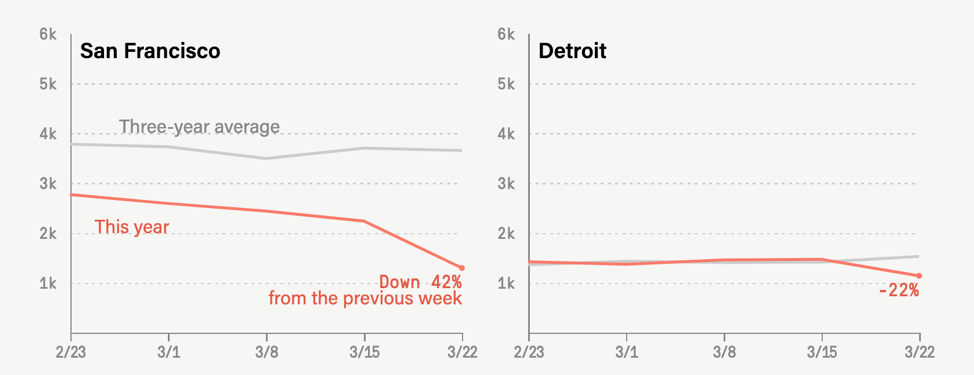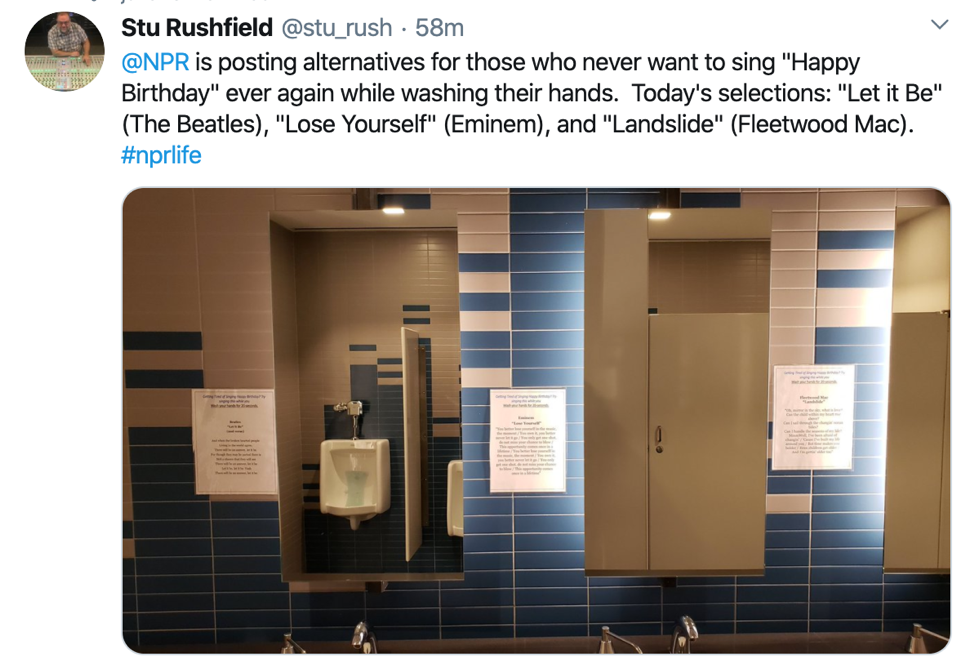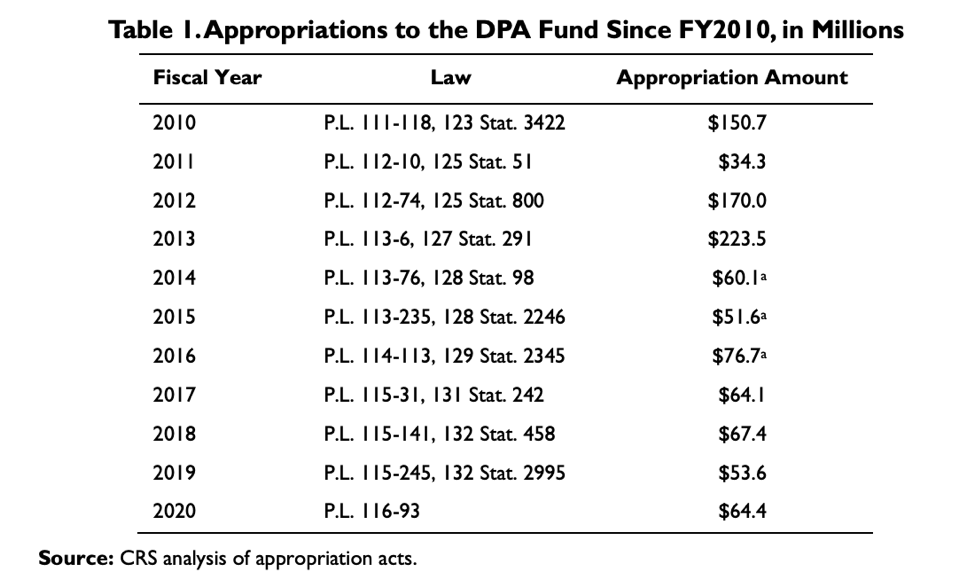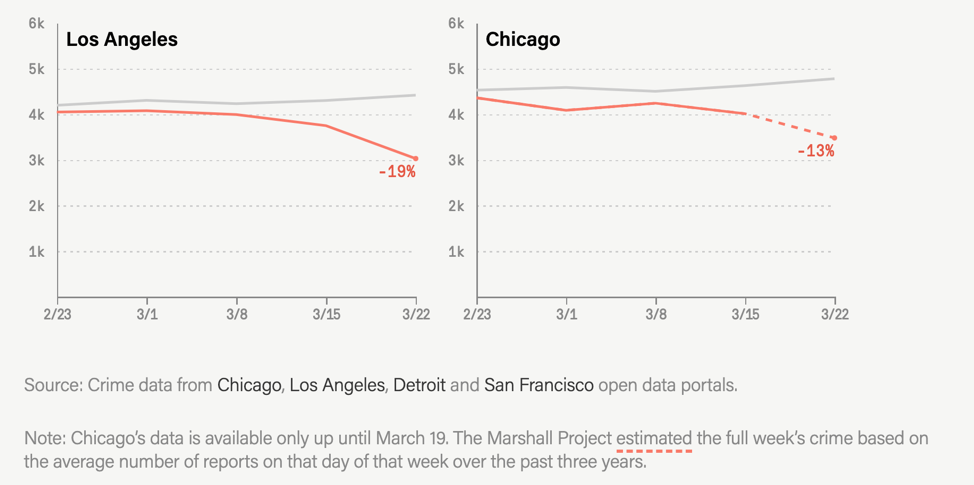 Covering COVID-19 is a daily Poynter briefing about journalism and coronavirus, written by senior faculty Al Tompkins. Sign up here to have it delivered to your inbox every weekday morning.
Covering COVID-19 is a daily Poynter briefing about journalism and coronavirus, written by senior faculty Al Tompkins. Sign up here to have it delivered to your inbox every weekday morning.
We are adding hundreds and hundreds of new readers to this column every week, so I want to take a second to welcome you and remind you what this newsletter is trying to accomplish.
The goal of this newsletter is to help journalists find ways to cover COVID-19. I mostly focus on stories that anybody can adapt to any media in any market. Once in a while, like today, I will step back and take a dive into a part of the story that lots of people mention but don’t fully understand.
Please do feel free to send me story ideas, including links to your or your colleagues’ work, that you think will help others.
On Monday I will take a dive into how everybody — from hospitals to governors — is withholding essential information from journalists by citing the Health Insurance Portability and Accountability Act, commonly known as HIPAA.
What exactly is the Defense Production Act?
You probably think of the Defense Production Act as something that the government would only use in wartime, like, for instance, to turn an auto plant into a factory to produce tanks. But the Korean War-era law is used fairly routinely.
In fact, House Speaker Nancy Pelosi is pushing the Trump administration to use the act to produce protective masks for health care workers. The president did use the act to push General Motors into building more medical ventilators.
So, what authority does the Defense Production Act give the government and how is it used?
The act was passed in 1950 and was intended to give the government the ability to act fast in emergencies. The Federal Emergency Management Agency describes the act as “the primary source of presidential authorities to expedite and expand the supply of resources from the U.S. industrial base to support military, energy, space and homeland security programs.”
Early last month, the Congressional Research Service, a public policy research institute for Congress, said the act gives the president broad influence over industry in the name of national defense. The act has been renewed and revised dozens of times — the current version of the act, approved last year, is in force until 2025.
The FBI has used the Defense Production Act to support terrorist screening programs. FEMA has used the act to buy emergency housing after flooding in 2017. The act was invoked to rebuild the electrical grid in Puerto Rico after Hurricane Maria, and used to ensure natural gas supplies to California after the 2001 electrical blackouts.
The Defense Production Act can also interrupt an order that the government says Americans need for defense or an emergency that might have been exported outside of the U.S. So, for example, if a company was producing ventilators and planned to ship them to Italy, the act would allow the government to keep the ventilators in the U.S.
Originally, the Defense Production Act was limited to issues of national defense, but as often happens in government, there has been some “mission creep.” The act now includes “critical infrastructure assistance” to any foreign nation, and recent versions of the act added homeland security to the definition. Interestingly, the act also says the U.S. government should “encourage the geographic dispersal of industrial facilities in the United States to discourage the concentration of such productive facilities within limited geographic areas that are vulnerable to attack by an enemy of the United States.”
When is the last time you heard the government encouraging the dispersal of factories because of national defense?
The Defense Production Act allows the federal government to place rush orders and to issue loans to vendors to help them increase production. The act is supposed to give priority to contractors who are small businesses and/or are businesses in economically distressed areas of the country.
The act was also the foundation, earlier this week, for the investigation and arrest of a Brooklyn man who the government said hoarded thousands of N95 masks that medical workers need. He reportedly offered to sell a thousand of the masks for $12,000, a 600% markup.
The New York Times documented hundreds of examples of how the Trump administration has used the Defense Production Act before the coronavirus outbreak. The government used the act when the U.S. wanted to procure “rare earth elements” used in the manufacturing components in weapon systems, including precision-guided munitions, lasers, radar, sonar, night vision systems, jet engines and armored vehicles.
The Congressional Research Service said that the act’s pertinent powers fall into three main categories. The third one in this list is really interesting. Imagine the president using it to force industry executives into government service!
Title I: Priorities and Allocations, which allows the President to require persons (including businesses and corporations) to prioritize and accept contracts for materials and services as necessary to promote the national defense.
Title III: Expansion of Productive Capacity and Supply, which allows the President to incentivize the domestic industrial base to expand the production and supply of critical materials and goods. Authorized incentives include loans, loan guarantees, direct purchases and purchase commitments, and the authority to procure and install equipment in private industrial facilities.
Title VII: General Provisions, which includes key definitions for the DPA and several distinct authorities, including the authority to establish voluntary agreements with private industry; the authority to block proposed or pending foreign corporate mergers, acquisitions, or takeovers that threaten national security; and the authority to employ persons of outstanding experience and ability and to establish a volunteer pool of industry executives who could be called to government service in the interest of the national defense.
While Congress can pass bills to add to Defense Production Act spending, here is the recent history of how much the Treasury Department has budgeted for its use.
A little bit of Defense Production Act history
You can consider the current Defense Production Act a grandchild of the First and Second War Powers Acts of 1941 and 1942. The current version of the act is way watered down from the original 1950s version that gave the president the power to “ration consumer goods, fix wage and price ceilings, force settlement of some labor disputes, control consumer credit and regulate real estate construction credit and loans, provide certain antitrust protections to industry.”
Like the War Powers Acts, the Defense Production Act has a “sunset” provision that requires it to be renewed. The intent is not to give unauthorized power to the president and to ensure it is not abused outside of special defense circumstances. That is one reason the Trump administration’s frequent use of the act, pointed out by The New York Times, might raise some eyebrows.
Who oversees the use of the Defense Production Act?
The act currently lies within the jurisdiction of the House Committee on Financial Services and the Senate Committee on Banking, Housing, and Urban Affairs. A bit of trivia: The original Defense Production Act created a special committee to oversee the use of the act. The Joint Committee on Defense Production included selected members from the standing Committees on Banking and Currency of the Senate and House. That joint committee disbanded in 1977.
What about the “Executive Reserve?”
This is the part of the Defense Production Act that really catches my attention.
The Congressional Research Service explained it this way:
Title VII of the DPA authorizes the President to establish a volunteer body of industry executives, the “Nucleus Executive Reserve,” or more frequently called the National Defense Executive Reserve (NDER).
The NDER would be a pool of individuals with recognized expertise from various segments of the private sector and from government (except full-time federal employees). These individuals would be brought together for training in executive positions within the federal government in the event of an emergency that requires their employment.
The head of any government agency could establish a unit of the NDER to train its people. This part of the act is not currently being used, but it could be. To order the activation of the executives, the Secretary of Homeland Security would have to declare in writing that “an emergency affecting the national defense exists and that the activation of the unit is necessary to carry out the emergency program functions of the agency.”
COVID-19 is linked to lower crime rates in some cities
I wondered a couple of weeks ago if this would happen: There is some evidence that crime is down in some places, and the coronavirus is a reason. The Marshall Project reported:
“In fact, in Chicago, Detroit, Los Angeles and San Francisco, recent data show big drops in crime reports, week over week. The declines are even more significant when we compare this year with the same time periods in the three previous years.”
Look at these graphs the Marshall Project produced:
 The story warns against making too much out of these figures until we see if there is a longterm trend. While the drop may be due to more people staying at home, so they are not out committing crimes or becoming targets of crime, it is just as likely that the numbers reflect police officers’ reluctance to arrest people on low-level crimes so they don’t have to put them in police cars and have close contact.
The story warns against making too much out of these figures until we see if there is a longterm trend. While the drop may be due to more people staying at home, so they are not out committing crimes or becoming targets of crime, it is just as likely that the numbers reflect police officers’ reluctance to arrest people on low-level crimes so they don’t have to put them in police cars and have close contact.
Staying at home, drinking more liquor
Booze sales are up, as in WAY up.
Nielsen reported sales of booze in the U.S. rose 55% in the week ending March 21.
As often happens in hard times, hard liquor sales jumped the most — 75%. Beer sales are up 42% and wine sales are up 66% from the same period last year.
Wine delivery has caught fire, too. Vivino, the wine rating and sales app, said it has seen a 300% growth in sales since COVID-19 appeared.
The big downside for distributors is their refrigerators are filled with beer kegs while restaurants and bars remain dark.
The Poynter daily local roundup
My colleague Kristen Hare is producing an afternoon roundup about how local newsrooms are covering COVID-19. Even with ill winds of layoffs, furloughs and stay-at-home orders blowing in their faces, local journalists are telling stories, challenging blustering politicians and connecting communities. You will be impressed with what Kristen has found and will work to find daily.
How we work now
Oh NPR, how do I love thee today?
 We’ll be back Monday with a new edition of Covering COVID-19. Sign up here to get it delivered right to your inbox.
We’ll be back Monday with a new edition of Covering COVID-19. Sign up here to get it delivered right to your inbox.
Al Tompkins is senior faculty at Poynter. He can be reached at atompkins@poynter.org or on Twitter, @atompkins.









